This is the latest in a series of examinations of urban legends related to golf and whether they are true or false.
GOLF URBAN LEGEND: Augusta National Golf Club changed their rules to keep an African-American player from possibly qualifying for the Masters in 1962.
With the Augusta National Golf Club finally adding a female member to their club last year, I thought it would be interesting to examine another controversial period in Augusta history, the years before Lee Elder became the first African-American player to compete in the Masters Tournament in 1975. Charlie Sifford was a pioneer among African-Americans in the world of golf. There had been some African-American players in the late 19th Century, but the first half of the 20th Century had pretty much put an end to the inclusion of African-Americans in the sport.
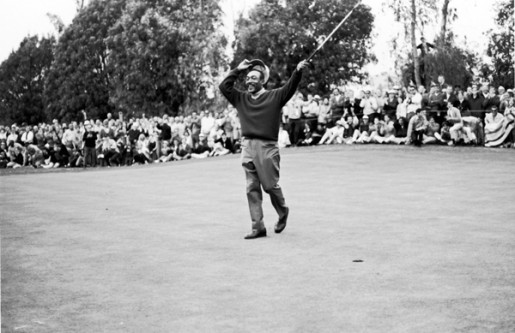
Sifford, a former caddy, challenged the establishment beginning in the early 1950s and he suffered a great deal of abuse for his efforts as he became the first African-American member of the Professional Golfers’ Association of America (PGA of America). What was surely aggravating for Sifford was the fact that for all of his struggles for equality, he did not even end up becoming the first player to break the color barrier at the Masters, as Lee Elder (as noted above) received that honor.
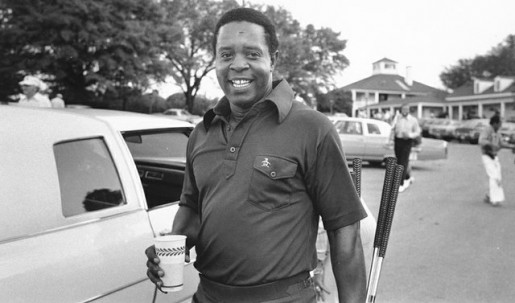
Much has been written about the supposed efforts that Augusta went through to keep Sifford and other African-American players from competing in the Masters. The most famous example is one that Sifford has recalled from 1962. In Curt Sampson’s book, The Masters: Golf, Money, and Power in Augusta, Georgia, Sampson wrote: “Sifford shot 67 to lead the Canadian Open in ’62. Shortly thereafter, according to Charlie, someone from Augusta called the clubhouse at Royal Montreal Golf Club. A sign was immediately posted on a bulletin board: ‘The Masters golf tournament has announced that it will not offer an automatic invitation to the winner of this year’s Canadian Open,’ which it had in the past. The Royal Canadian Golf Association could not confirm Sifford’s charge.”
Is this true?
Read the rest of this entry »
July 16th, 2013 | Posted in Golf Legends | No Comments
Here is the latest in a series of examinations into urban legends about the Olympics and Olympians and whether they are true or false. Click here to view an archive of the Olympic urban legends featured so far.
OLYMPIC URBAN LEGEND: A 17 year old took up the decathlon a few months before he won the Gold Medal in the event.
Bob Mathias was a sensational high school athlete whose high school career was coming to a close at the start of 1948, his senior year. Mathias already had received over FORTY first place finishes in various track and field events and had won the California Interscholastic Federation discus and shot put champion in 1947.
In the spring of 1948, his coach figured he could use a new challenge, so he suggested that Mathias try out for the decathlon in the Southern Pacific American Amateur Union Games in Los Angeles. The games were literally three weeks away, and Mathias had to actually learn how to play some of the games that make up the decathlon, including to pole vault and throw a javelin. What happened next was pretty amazing!
Read the rest of this entry »
July 15th, 2013 | Posted in Olympic Legends | 1 Comment
Here is the latest in a series of examinations into urban legends about the Olympics and Olympians and whether they are true or false. Click here to view an archive of the Olympic urban legends featured so far.
OLYMPIC URBAN LEGEND: A British athlete had to make a quick (and strange) move to find a country to compete for in the Olympics.
Yamilé Aldama had a problem.
The Cuban born triple jumper had been living in London, England, for three years, but she was unable to obtain a passport.
She had competed for Cuba in the 2000 Summer Olympics in the triple jump (coming in fourth) and now she wanted to compete for England.
However, things were going quite slowly (it did not help that her Scottish-born husband had recently been arrested on drug charges), and she already had missed out on the 2003 World Championships in France because of her lack of a passport.
Despite the aide of UK Athletics, the earliest she could obtain a British passport would be November 2004, some three months after the conclusion of the Olympic Games in Athens, Greece.
With seemingly nowhere else to turn, Aldama turned to, of all places, the Sudan.
Read the rest of this entry »
July 12th, 2013 | Posted in Olympic Legends | No Comments
Here is the latest in a series of examinations into urban legends about baseball and whether they are true or false. Click here to view an archive of the baseball urban legends featured so far.
BASEBALL URBAN LEGEND: An ejected manager sneaked back into the dugout during the game using a fake mustache and glasses.
Bobby Valentine took over as the manager of the New York Mets in 1996. He would remain the manager until 2002, leading the Mets to two playoff berths in 1999 and 2000, and a National League pennant in 2000 (they would lose to their crosstown rivals, the New York Yankees), with an overall record of 536-467 (and only one full season under .500 – his last).
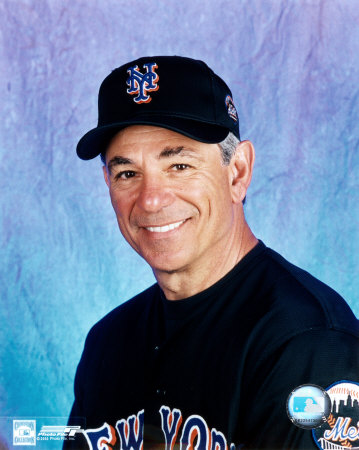
On June 9, 1999, Valentine was ejected from a game in the 12th inning for arguing with the umpires on a catcher’s interference call. What happened next was one of the odder sights in baseball history!
Read the rest of this entry »
July 9th, 2013 | Posted in Baseball Legends | 1 Comment
This is the latest in a series of examinations of legends related to boxing and whether they are true or false.
BOXING URBAN LEGEND: Walker Smith took the name of an older fighter to sneak his way into competitive boxing at a too-young age.
After moving to Harlem with his mother in 1933 when he was 12 years old, Walker Smith eventually got involved in boxing.
When he was 14, Smith wanted to box competitively. The only problem was that he could not do so unless he was certified by the Amateur Athletic Union (AAU). The only problem with THAT is that you can not be a member of the AAU until you are 16 years old.
Luckily for Smith, amateur boxing bureaucracy in the mid-1930s was not exactly a tight ship, so he was able to procure an ID from an older friend and compete under his friend’s name.
That friend’s name?
Read the rest of this entry »
July 6th, 2013 | Posted in Boxing Legends | No Comments
Here is the latest in a series of examinations into urban legends about basketball and whether they are true or false. Click here to view an archive of the basketball urban legends featured so far.
BASKETBALL URBAN LEGEND: Wilt Chamberlain had an infamously poor reaction to his coach’s invention of morning shootarounds.
Wilt Chamberlain was one of the most enigmatic basketball players of the 20th Century. Just based on talent alone, Chamberlain should have been the greatest player in the history of the National Basketball Association (NBA) (and as it currently stands, he is certainly in the top ten anyways), but Chamberlain tended to look at basketball a lot differently than some of his Hall of Fame peers. Chamberlain himself described the difference between himself and his most famous rival, Celtics center Bill Russell (winner of eleven NBA championships to Chamberlain’s two) as the fact that Russell would vomit before a game due to being so worried about winning while Chamberlain never wanted to win that badly, and he felt that he was happier NOT wanting to win that badly. He had varied interests outside of basketball (particularly a fondness for women that has since become legendary) – basketball was never the end all/be all to him and he liked it that way. He wanted to win, of course, heck, he wanted to win a lot – just not to the same extent that Russell did – and that was fine with Chamberlain.
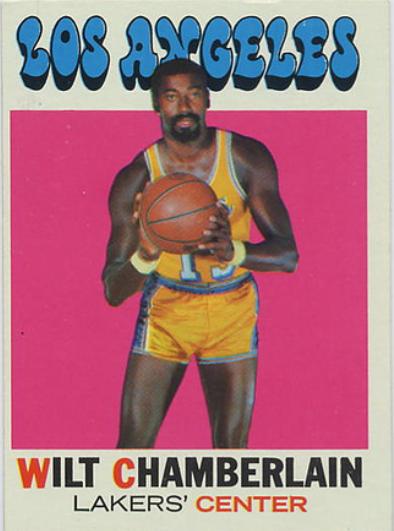
That attitude (and his penchant for late night partying) led to a famous story involving Chamberlain’s first season with Bill Sharman as the head coach of the Los Angeles Lakers (1971-72). That season, Sharman instituted something that had never been done in the NBA – he required his team to come in during the morning of a game to do mandatory morning shootarounds.
As legendary basketball columnist Sam Smith relays the story:
The creation of the shootaround, ostensibly to better prepare for games but also to perhaps push players to ending their nights out earlier, is credited to then Lakers coach Bill Sharman in 1971. My favorite story about that was with Wilt Chamberlain on that team. Wilt supposedly told Sharman he comes to the arena once a day and Sharman can decide when. Wilt pretty much eschewed the shootaround.
First off, real or fake, good attitude or bad, the way Chamberlain’s quote is most often told “You tell Bill Sharman that I’ll go to the arena one time today. Either now or for the game tonight. He can pick” is a great line.
But is it true?
Read the rest of this entry »
June 28th, 2013 | Posted in Basketball Legends | 2 Comments
Here is the latest in a series of examinations into urban legends about football and whether they are true or false. Click here to view an archive of the football urban legends featured so far.
FOOTBALL URBAN LEGEND: Spurred on by coach Knute Rockne’s halftime speech, Notre Dame player Jack Chevigny scored the winning touchdown for Notre Dame against Army and cried out “That’s for the Gipper!”
Knute Rockne’s halftime speech November 10, 1928 for Notre Dame, while trailing 6-0, has become one of the most famous speeches in the history of speeches, let alone sports speeches.
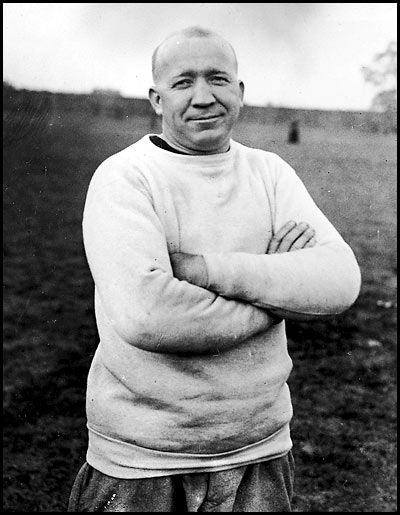
The speech supposedly featured Rockne inspiring his players by reminding them of former Notre Dame All-American George Gipp (the “Gipper”), who had died suddenly in 1920 at a young age and who had told Rockne, on his death bed that, at one point in the future, he’d like it if Rockne were to ask the guys to “win one for the Gipper.”
Notre Dame ended up winning the game 12-6.
As ESPN.com’s Ivan Maisel repeats the oft-told tale:
[W]hen Notre Dame came out of that Yankee Stadium locker room at halftime 75 years ago, Rockne had inspired the Irish so much that Army scored first. Legend has it that as Jack Chevigny scored with 2:30 to play to give the Irish a 12-6 victory, he said, “That’s one for the Gipper!”

Here’s the thing – Chevigny likely DID shout out something to the effect of “this is for the Gipper.”
However, he did NOT do it to WIN the game.
Read the rest of this entry »
June 27th, 2013 | Posted in Football Legends | No Comments
Here is the latest in a series of examinations into urban legends about baseball and whether they are true or false. Click here to view an archive of the baseball urban legends featured so far.
BASEBALL URBAN LEGEND: Cornelius McGillicuddy changed his name to Connie Mack because he was tired of writing his name on the scorecard each day.
As the story goes, Cornelius McGillicuddy shortened his name to Connie Mack when he was managing the Philadelphia Athletics because he was tired of squeezing the C. McGillicuddy on the scorecard.
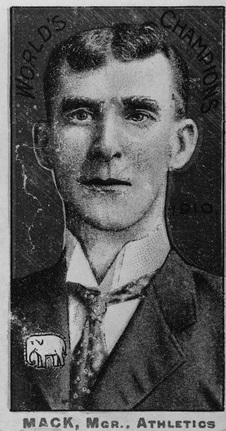
However, there are a few things wrong with that one…
Read the rest of this entry »
June 26th, 2013 | Posted in Baseball Legends | No Comments
Here is the latest in a series of examinations into urban legends about basketball and whether they are true or false. Click here to view an archive of the basketball urban legends featured so far.
BASKETBALL URBAN LEGEND: A convicted man asked for his sentence to be INCREASED to honor his favorite basketball player.
Eric James Torpy was in a bind in October of 2005.
The Oklahoma City man was charged with shooting with intent to rob and kill.
His defense attorney and the prosecutors worked out a plea agreement for Torpy – he would plead guilty and serve 30 years for the charge.
Torpy, though, had a different idea in mind.
Read the rest of this entry »
June 25th, 2013 | Posted in Basketball Legends | No Comments
Here is the latest in a series of examinations into urban legends about basketball and whether they are true or false. Click here to view an archive of the basketball urban legends featured so far.
BASKETBALL URBAN LEGEND: Dave Cowens once took a break from the Celtics during the season to drive a cab.
Dave Cowens was the fourth overall pick in the 1970 NBA Draft and was named Co-Rookie of the Year at the end of that season.
By his third season in the NBA, Cowens was one of the best centers in the game, and in that 1972-73 season, Cowens averaged 20.5 points per game and 16.2 rebounds on the way to being named the NBA Most Valuable Player (although, amusingly enough, he did not make the First Team All-NBA, something he never managed to crack during his career).

After the Celtics won the NBA title in 1974, Cowens actually wandered around Boston celebrating with the “regular folks.” He famously ended up sleeping on a park bench that night. That was likely a sign of things to come for Cowens (think Pulp’s “Common People” – actually, instead, think William Shatner’s cover of Pulp’s “Common People”).
The Celtics won another title in 1976.
The following year, though, Cowens was feeling “burned out,” so he actually took a 65-day leave of absence from the Celtics to, I guess, find himself or whatever.
Read the rest of this entry »
June 24th, 2013 | Posted in Basketball Legends | No Comments













